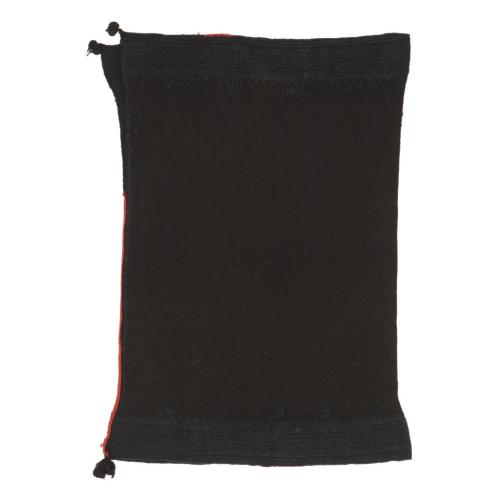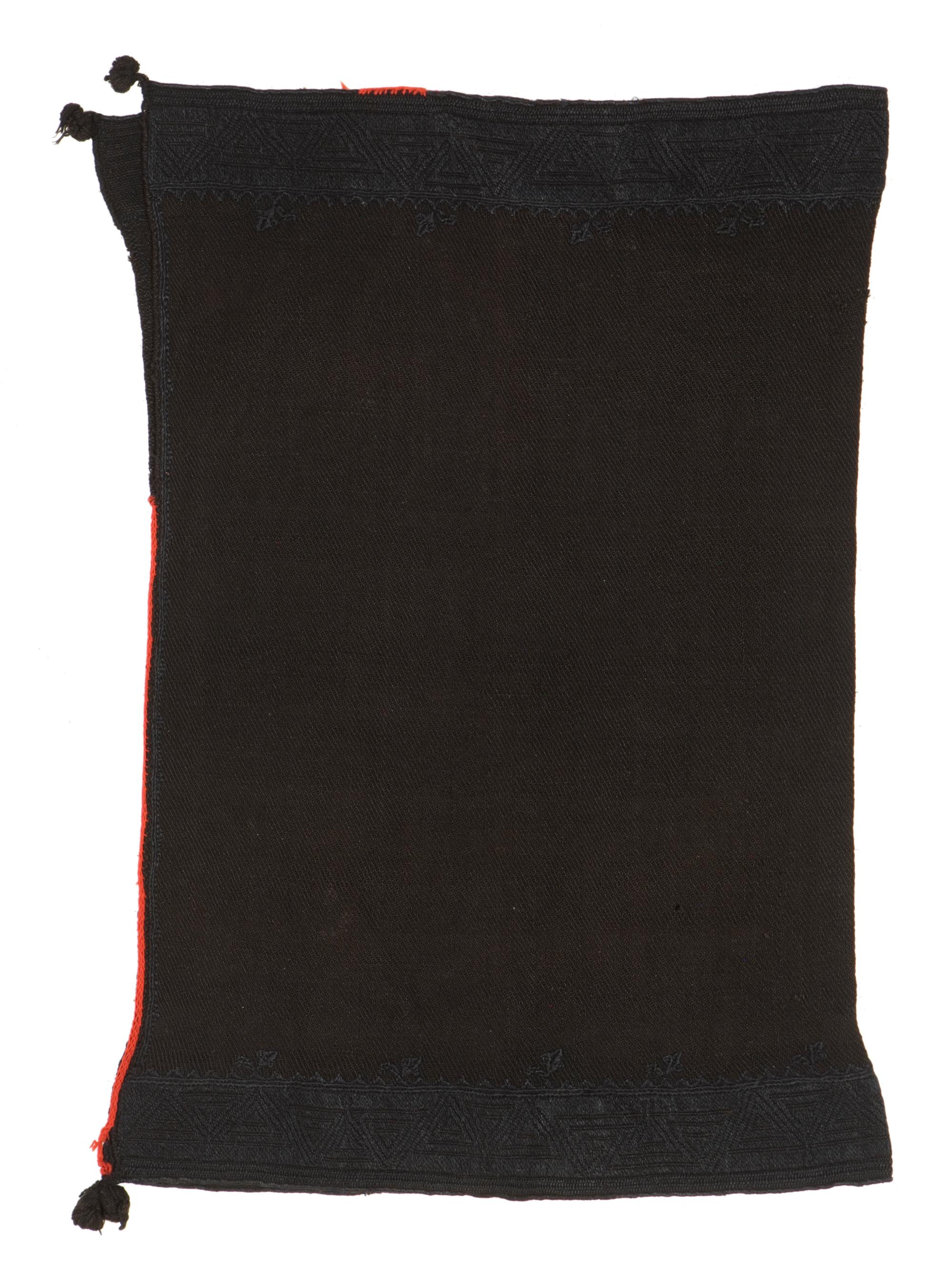
Photograph by Addison Doty. Copyright 2009 School for Advanced Research.
Dress | Eha yadonanne
Date: 1870-1880
Artist or Maker: Unknown
Dimensions:
155 x 112 cm (61 x 44 1/8 in.)
Medium: wool | dyes
Credit Line: Gift of Amelia Elizabeth White, 1963.
Place Made:
Zuni Pueblo, McKinley County, New Mexico, Southwest, United States, North America
Object Number: IAF.T625
Not on view
Tribal Collection Review RemarksJim Enote and Octavius Seowtewa during collection review visit April 6 and 7, 2009 (Events Record “Collection Review: Zuni Tribe, Review 1”): This is a ceremonial textile that was used as a dress. It is a type of textile used in many pueblos, not just Zuni. When made into a dress, the Zuni word for it is yadonanne. It is folded in half and stitched together at the edges using red wool yarn (see detail photo). Not many people at Zuni still know how to do this stitch, which is a type of chain stitch called dolounna in Zuni. When it is not stitched together, it can be used as a shawl or blanket, called ba’inne. The word Zuni word eha means black in English. So, in the case of this piece, it would be called eha yadonanne, because it is a black dress. In order to dye this textile a stable black, it would have first been dyed red, using dye made from the berries of a holly-like bush. It would then have been dyed using a dye made from the outer skins of black walnuts. If it were just dyed with the black walnut skin dye, and not with the red dye first, it would have faded to gray when washed. In the past, this type of textile was worn as everyday clothing, but now it is mostly used in ceremonial contexts. This piece should be considered ceremonial because it would certainly have been worn at ceremonies. Though it was worn at ceremonies, they would not have been the types of ceremony that would have imbued the textile with a level of sacredness such that it must be kept from the general public. It is okay for photography and publication by anyone and has no special storage or handling restrictions.
In Collection(s)
Bibliography:
The Indian Arts Research Center, in collaboration with Native American community scholars, strives to present accurate collections records. Records may be updated as new information becomes available and is reviewed with the Native American community having cultural affinity to particular items. Please write to iarc@sarsf.org if you have questions or concerns related to the documentation.
